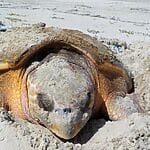11 Interesting Animals in Central America – You Might Not Know
Central America is a biodiversity hotspot, boasting a rich tapestry of fascinating and unique animals. It is a vibrant and diverse region that bridges North and South America, consisting of seven countries – Belize, Costa Rica, El Salvador, Guatemala, Honduras, Nicaragua, and Panama.
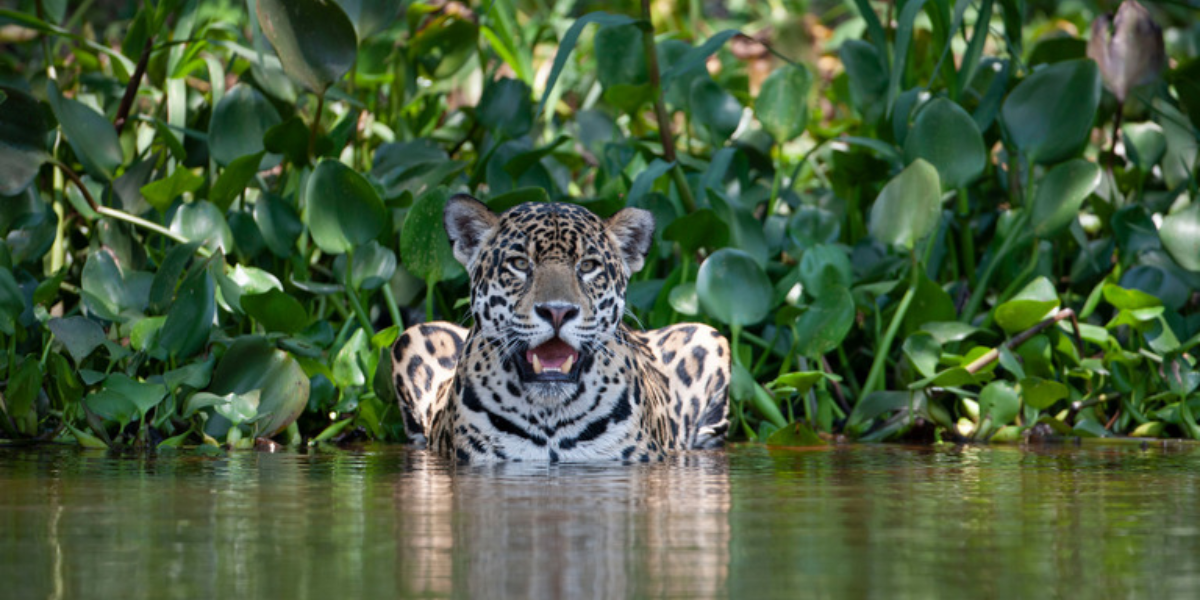
In the dense rainforests of countries like Costa Rica and Belize, you can spot many interesting animals in Central America. Like the elusive jaguar prowls, symbolizing the region’s majestic big cats. Sloths, known for their slow and deliberate movements, inhabit the treetops of countries like Panama and Honduras.
Additionally, other interesting animals in Central America include capuchin monkeys that swing through the canopies with remarkable agility. Along the Pacific and Caribbean coasts, sea turtles, including the endangered Hawksbill and Olive Ridley, return to the sandy shores to nest.
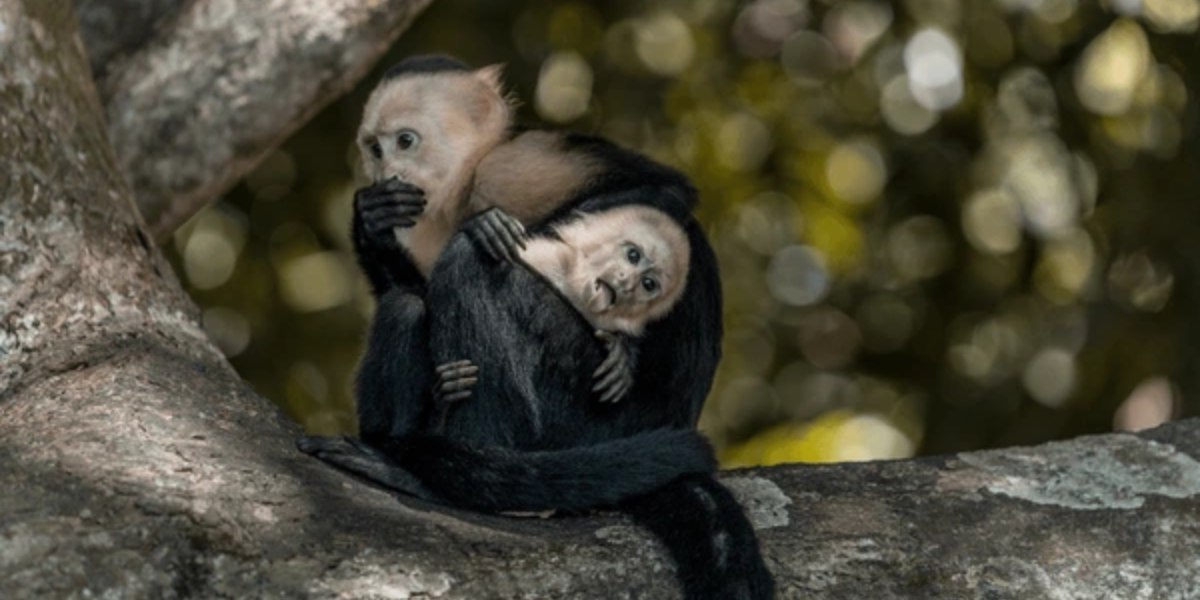
Central America offers a rich tapestry of diverse landscapes and wildlife, making it an enticing destination for nature enthusiasts. In this region, visitors can explore lush rainforests, volcanic landscapes, pristine beaches, and vibrant coral reefs.
Whether trekking through dense jungles, exploring ancient ruins, or snorkeling in crystal-clear waters, Central America provides a captivating blend of adventure and biodiversity for wildlife enthusiasts and nature-loving tourists.
Where to Look for Interesting Animals in Central America – (With Interesting Facts and Pictures)
Central America is home to a plethora of interesting wild animals, from colorful birds to elusive mammals. The dense rainforests and tropical climates provide ideal habitats for a wide variety of species thriving in Central America.
In this blog, we have gathered 11 interesting animals in Central America that are worth exploring, and in which Cerntral American countries they are found.
The kinkajou (Potos flavus)
The Kinkajou is one of the most interesting mammals native to Central and South America and can be found in a range of countries, including Mexico, Nicaragua, Costa Rica, Panama, Brazil, and Honduras.
The natural habitat of these interesting animals in Central America include tropical rainforests, where it thrives amidst dense vegetation and canopy cover. The kinkajou is recognized for its arboreal lifestyle, utilizing its prehensile tail to navigate through the treetops.
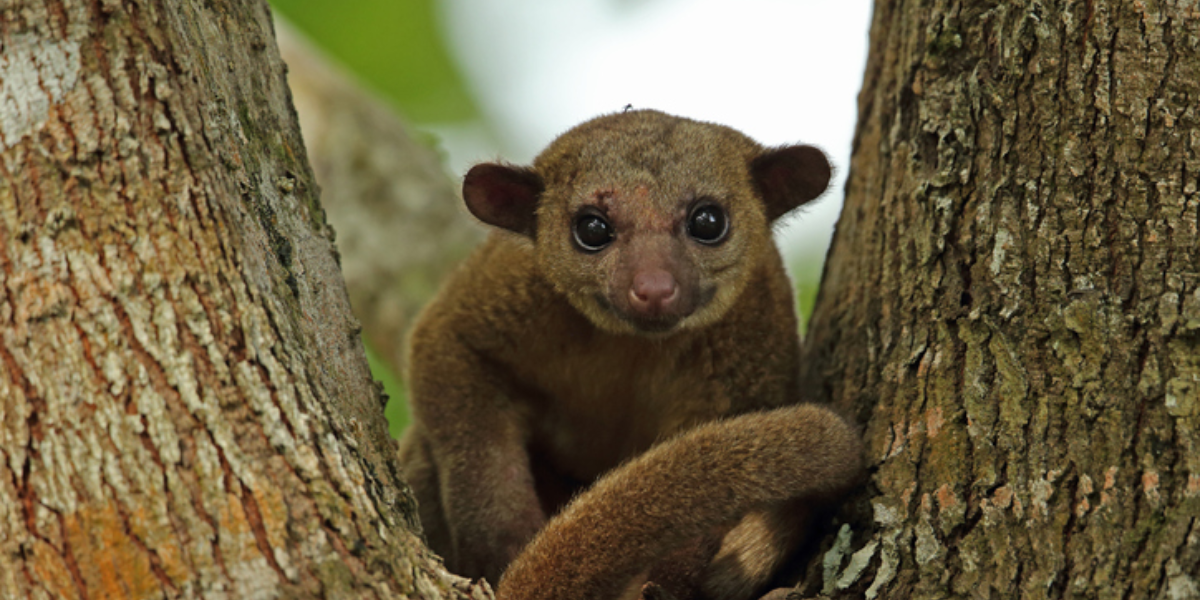
This nocturnal creature exhibits a small, bear-like physique, measuring around 40 to 60 centimeters in length, with a prehensile tail almost as long as its body. Weighing between 1.4 to 3.3 kilograms, the kinkajou possesses a distinctive round face and large eyes adapted for night vision.
On the IUCN Red List of threatened species, the kinkajou is classified as “Least Concern.” Moreover, their population is facing threats due tohabitat destruction resulting from deforestation, as well as potential exploitation for the pet trade.
Poison Dart Frog/ Strawberry Poison Dart Frog (Dendrobatidae)
The Poison Dart Frog is known for its vibrant colors and toxic skin secretions and is mainly found in the rainforests of Central and South America.
These interesting animals in Central America can also be spotted in other Central American countries such as Costa Rica, Nicaragua, Panama, Colombia, and Brazil are home to various species of these intriguing amphibians.
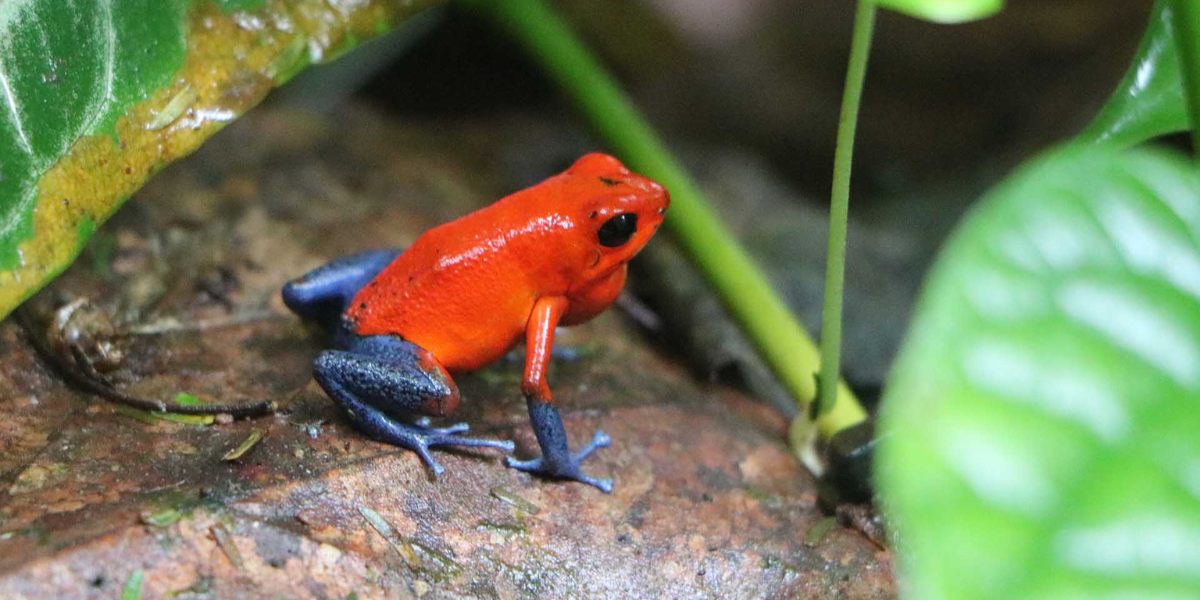
The poison dart frog also known as strawberry poison dart frog thrives in lush tropical habitats, including leaf litter, moss-covered rocks, and vegetation near water bodies. Typically small in size, Poison Dart Frogs measure between 0.5 to 2.5 inches and exhibit a remarkable array of colors, serving as a warning to potential predators about their toxicity.
Despite their diminutive size, these frogs can weigh up to a few grams. On the IUCN Red List status of Poison Dart Frogs varies among species, with some listed as “Least Concern,” while others, particularly those with restricted ranges or facing habitat loss, are categorized as “Near Threatened or Vulnerable.”
The primary threats to the Poison Dart Frog population include habitat destruction due to deforestation, climate change impacting their sensitive environments, and collection for the pet trade.
Green Iguana/ American Iguana (Iguana iguana)
The green iguanas are renowned for their vibrant emerald skin color and are native to Central and South America. Other central American countries where their population is thriving are Mexico, Belize, Guatemala, Honduras, Nicaragua, Costa Rica, Panama, Colombia, Ecuador, and parts of Brazil.
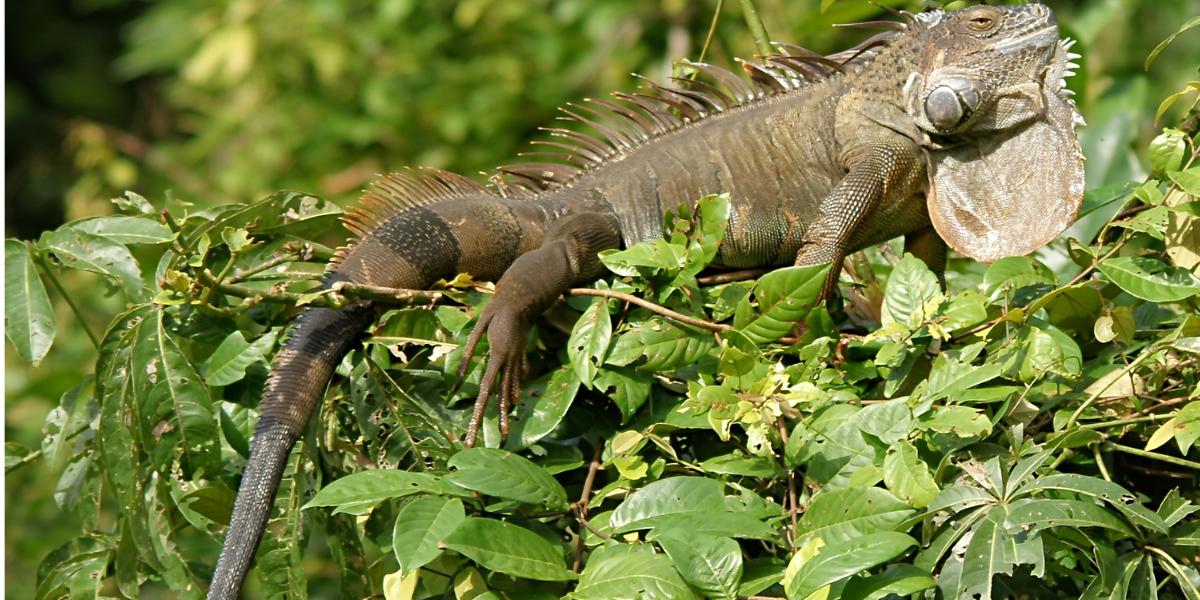
These interesting animals in Central America found in a variety of ecosystems, Green Iguanas are commonly found in tropical rainforests, mangrove swamps, and along riverbanks of South America and Central America.
Green Iguanas possess a robust yet agile build, featuring a long tail, dewlap (a throat fan), and sharp claws adapted for climbing. Males can grow up to 6 feet in length and may weigh around 11 pounds, while females are generally smaller.
Despite their prevalence, the Green Iguanas are listed as “Least Concern” on the IUCN Red List. However, their populations face threats from habitat destruction, hunting for the pet trade, and climate change.
Spider Monkey (Simia Paniscus)
Sider monkeys are arboreal primates found in the rainforests of Central and South America. They are also found in Mexico, Belize, Guatemala, Honduras, Nicaragua, Costa Rica, Panama, Colombia, Venezuela, Ecuador, Peru, and Brazil.
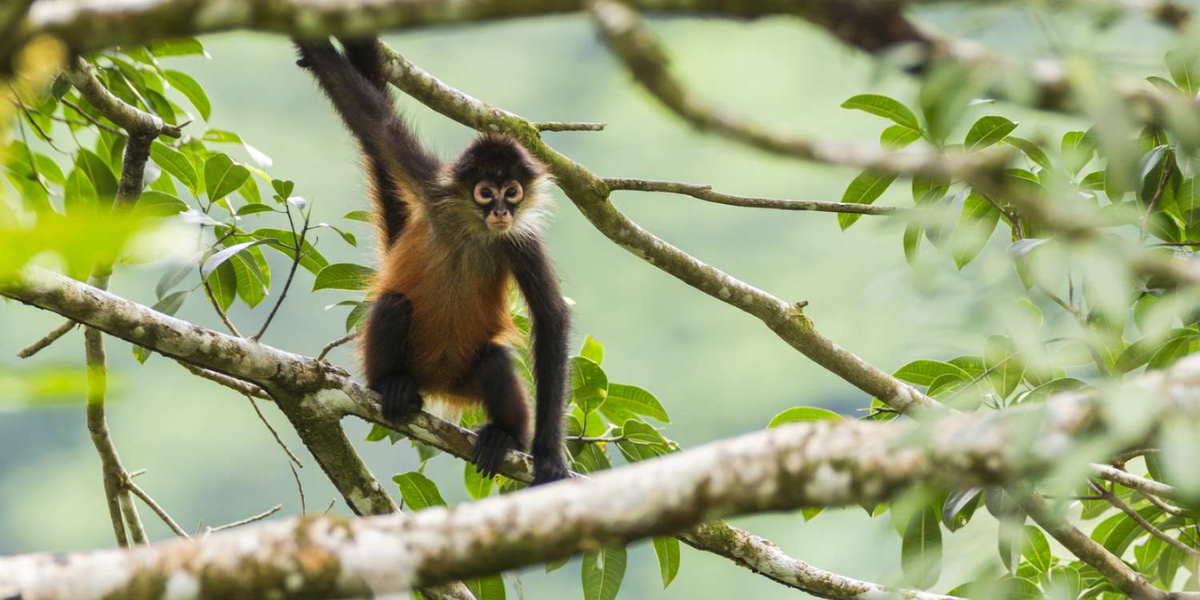
These interesting animals in Central America thrive in the dense canopies of tropical rainforests, using their long limbs and prehensile tails to swing from tree to tree with remarkable agility.
Spider Monkeys possess slender bodies, long limbs, and a distinctive prehensile tail that is adapted for grasping and navigating their arboreal habitat. They can weigh between 15 to 24 pounds and have a body length of approximately 16 to 24 inches, excluding their tail.
Their conservation status varies based on species which ranges from “Vulnerable to Critically Endangered.” The main threats to their population include deforestation, habitat fragmentation, and illegal pet trade.
Some Interesting Venomous Snakes in Central America
Central America is home to a variety of fascinating and venomous snakes, adding a touch of intrigue to its diverse ecosystems. Such as the Eyelash Viper, a captivating venomous snake found across Central America, known for its striking coloration and distinctive scales above its eyes resembling eyelashes.
Despite its venomous bite, this arboreal snake is more often observed hanging from branches than posing a direct danger to humans.
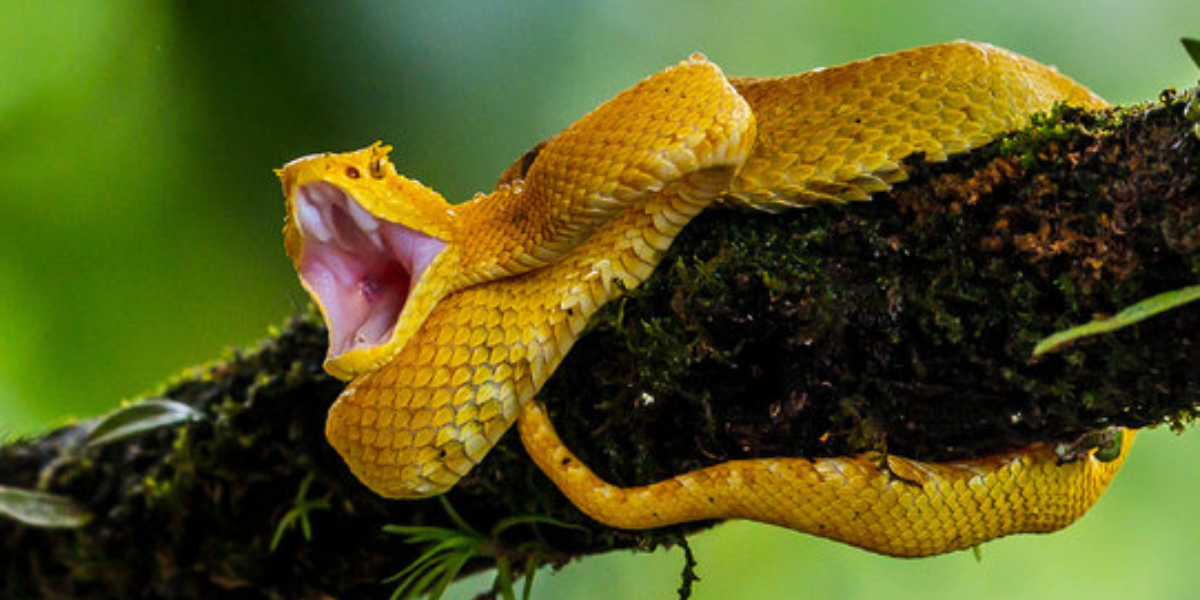
Another interesting snake in Central America is the Bushmaster (Lachesis), a large and highly venomous snake, that inhabits the rainforests of Central America.
They are known for their cryptic coloration and potent venom, the South American Bushmaster is a secretive and elusive serpent, adding an element of mystery to the region’s rich biodiversity. Moreover, some other interesting snake species in Central America are given below.
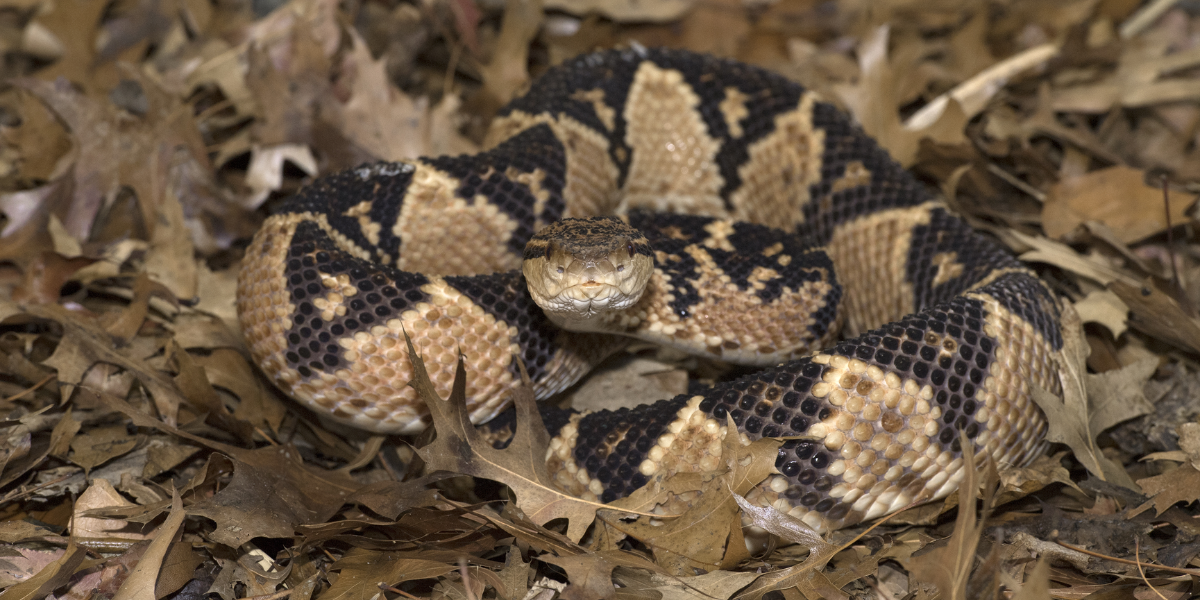
Fer-de-lance Viper (Bothrops asper)
The Fer-de-Lance Viper is one of the most interesting animals in Central and South America. They are found in South, and Central American countries, which include Mexico, Guatemala, Belize, Honduras, Nicaragua, Costa Rica, Panama, Colombia, Ecuador, and Venezuela.
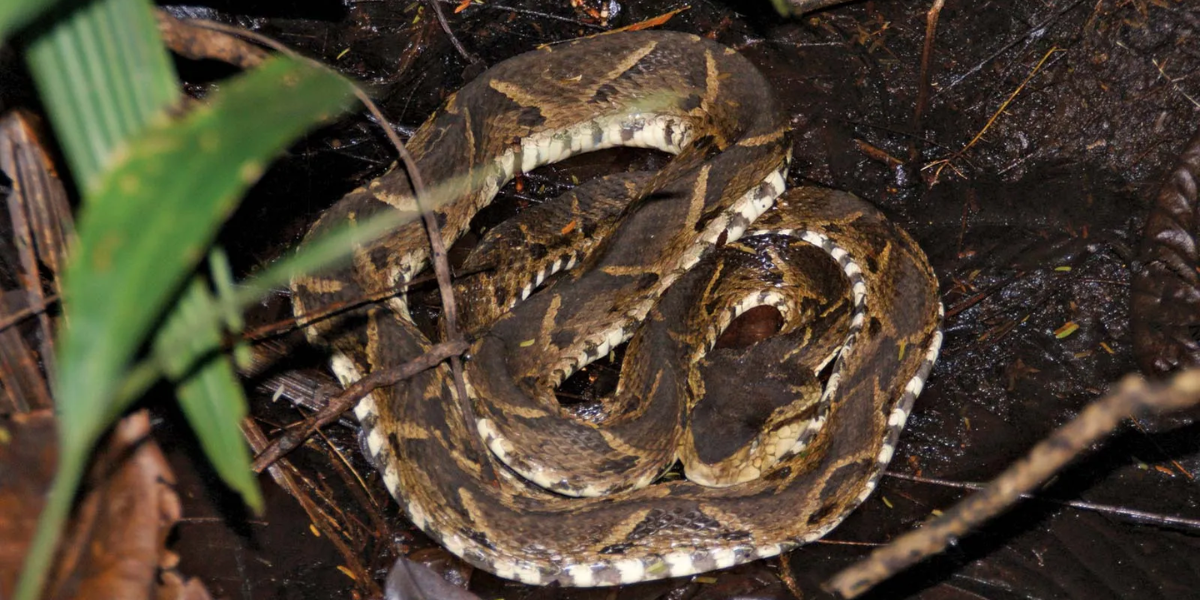
These are the most venomous snakes of Central and South America and thrive in diverse environments, ranging from rainforests and grasslands to cultivated areas and disturbed habitats.
These vipers are known for their robust physique, the Fer-de-lance is a large viper, with adults typically measuring between 1.2 to 2 meters in length and weighing around 3 kilograms. These snakes have a distinctive triangular head and a heat-sensing pit between their eyes and nostrils, it is equipped for effective predatory strikes.
The IUCN Red List classifies the Fer-de-lance Viper as a species of “Least Concern,” as it maintains a stable population. However, the primary threats to its existence include habitat destruction, human-wildlife conflict, and persecution due to its venomous nature.
Central American Coral Snake (Micrurus nigrocinctus)
The Central American Coral snake is a venomous serpent indigenous to the diverse landscapes of Central America, notably found in countries like Honduras, Nicaragua, Costa Rica, Panama, and parts of Colombia.
These interesting animals in Central America inhabit a variety of ecosystems, including tropical rainforests, coastal plains, and even agricultural areas. The coral snakes can be recognized for their distinctive coloration of alternating red, black, and yellow bands.

Central American Coral Snakes possess a slender physique, typically measuring around 50-70 centimeters in length. Despite their small size, their potent venom makes them formidable predators. The IUCN Red List status of the Central American Coral Snake is “Least Concern.”
Nevertheless, these snakes face threats from habitat destruction, fragmentation, and persecution due to misconceptions about their dangerous nature.
Nine-banded Armadillos (Dasypus novemcinctus)
Nine-banded armadillos are intriguing mammals native to the Americas, primarily found in the southern United States, Mexico, Central America, and parts of South America.
These interesting animals in Central America thrive in a range of habitats, from grasslands and forests to scrublands and open areas, displaying a remarkable ability to adjust to diverse environments.
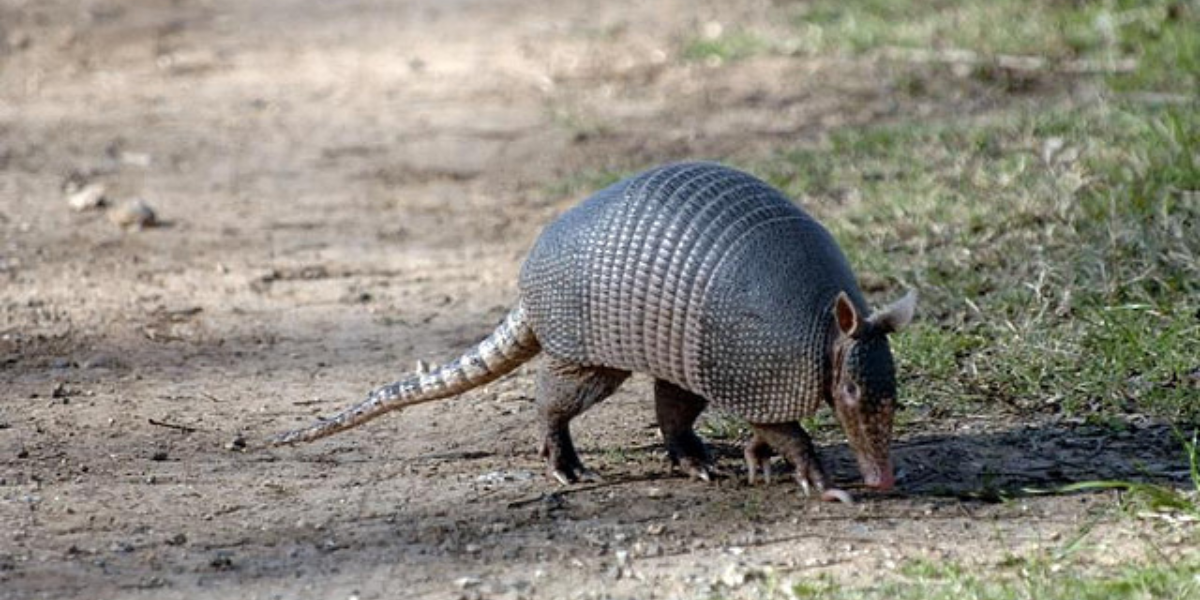
The armadillos are characterized by a tough, armor-like shell composed of nine distinct bands, these medium-sized armadillos typically measure 60 to 100 centimeters in length, with males being slightly larger than females.
Despite their armor, they are surprisingly agile, capable of digging burrows and rolling into a defensive ball when threatened. On the IUCN red list of threatened species, the nine-banded armadillos are listed as “Least Concern.”
However, their populations face threats such as habitat destruction due to urbanization, road mortality, and hunting.
Baird’s Tapir (Tapirus bairdii)- Mammal Species
Baird’s Tapir, is the largest land mammal, and exotic animals in Central America and inhabits countries such as Mexico, Belize, Guatemala, Honduras, Costa Rica, Nicaragua, and Panama. These tapirs thrive in diverse habitats, ranging from dense rainforests and grasslands to swamps and cloud forests.

The Baird’s tapir is known for their distinctive appearance and possesses a robust physique with a barrel-shaped body, a short, prehensile trunk, and a distinctive whitish lip.
Baird’s Tapir is classified as an “Endangered Species” on the IUCN Red List, These interesting animals in Central America are facing survival challenges due to habitat loss caused by deforestation, human encroachment, and poaching for their meat and hides.
Resplendent Quetzal (Pharomachrus mocinno) -National Bird of Central America
Resplendent Quetzal is the national bird of several Central American countries, including Guatemala and Costa Rica. This striking bird is a symbol of freedom, beauty, and divinity.
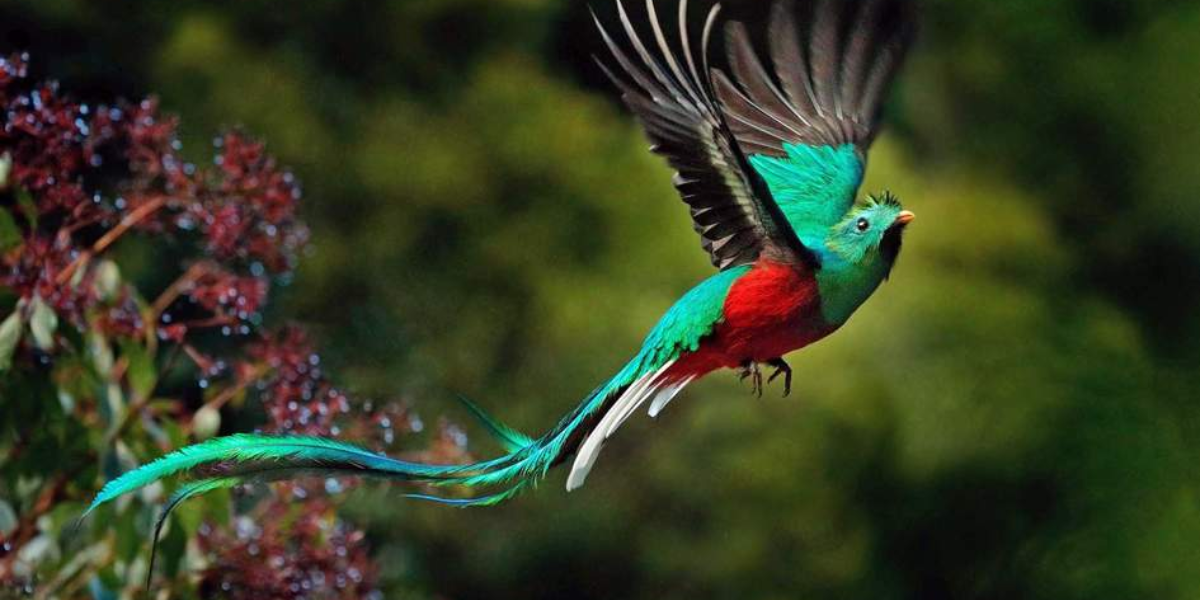
These interesting birds are endemic to the cloud forests of Central America, particularly in the mountainous regions, the Resplendent Quetzal finds its habitat in the dense foliage of montane forests.
The male Resplendent Quetzal is a breathtaking sight, boasting iridescent green and red feathers, a distinctive crest, and an exceptionally long tail. Females also have the same colors but have shorter tails.
These birds were considered sacred by indigenous cultures, and their feathers were used in ceremonial headdresses. The Resplendent Quetzal faces threats such as habitat loss due to deforestation. Moreover, on the IUCN red list of threatened species, these interesting birds are classified as “Near Threatened.”
The Bald Eagle (Haliaeetus leucocephalus)
The Bald eagle is not a native species in Central America. It is an iconic bird of prey primarily found in North America, spanning the United States and Canada.
These interesting animals in Central America inhabit diverse landscapes, including coastal areas, lakeshores, and large inland bodies of water. They build their massive nests in tall trees near water sources, a crucial element for their hunting and feeding habits.
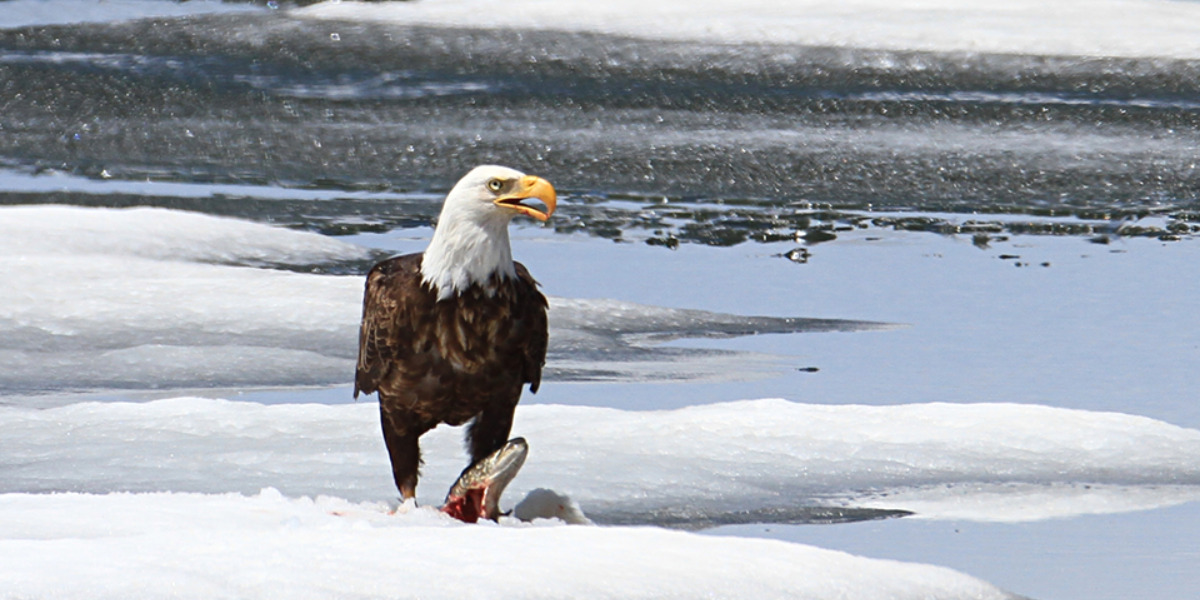
These interesting animals are known for their striking appearance, adult Bald Eagles boast a distinctive white head and tail, contrasting with a dark brown body. They exhibit a wingspan ranging from 1.8 to 2.3 meters, and females are generally larger than males.
Weighing between 3 to 6.3 kilograms, these formidable raptors are adept hunters, relying on fish as a primary food source. The Bald Eagle is listed as a species of “Least Concern” on the IUCN Red List, signaling a relatively stable population.
Unfortunately, these interesting animals in Central America face threats such as habitat degradation, pollution, and accidental poisoning from lead exposure.
Frequently Asked Questions about Interesting Animals in Central America
What rare animals are in Central America?
Mexican spider monkey, the horned guan, and Baird’s tapir are the rarest animals in Central America.
What types of animals are native to Central America?
A vast variety of endangered animals are native to Central America, such as the jaguar, giant anteater, Baird’s tapir, cougar, Central American river turtle, green sea turtle, hawksbill sea turtle, leatherback sea turtle, and Olive Ridley Sea Turtle.
What animals are unique to the Americas?
The Bald Eagle, Luna Moth, Groundhog, American Bison, American Black Bear, Alligator, and Gila monster are unique animals in the Americas.
What is America’s national animal?
The Bald eagle is the national animal of the Americas.








